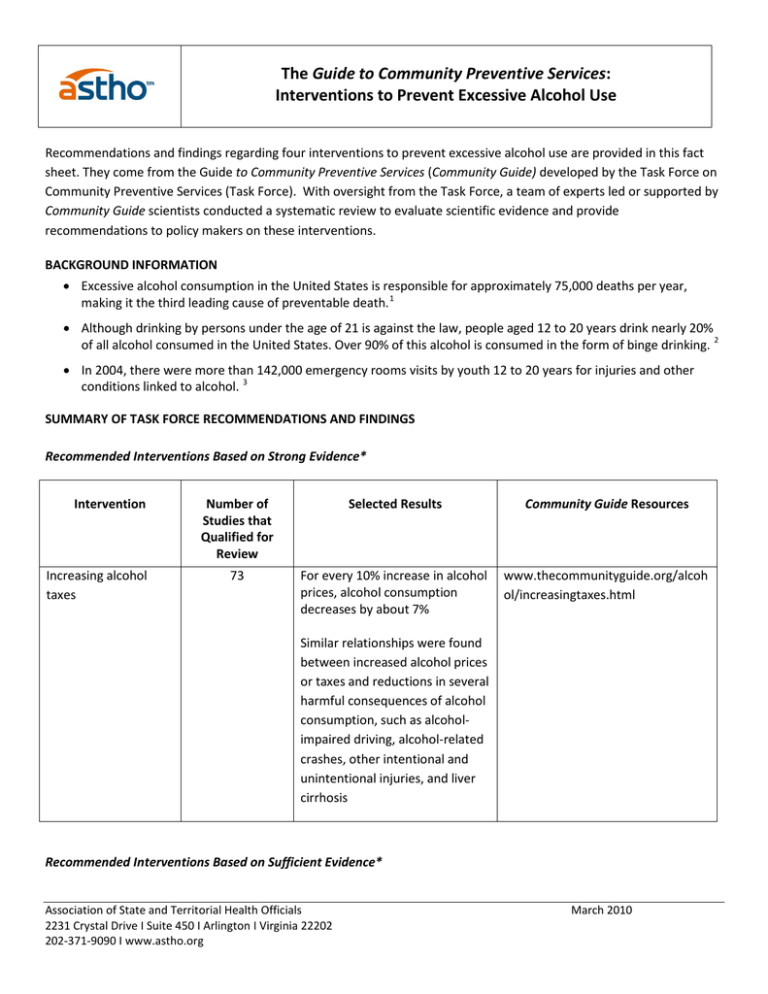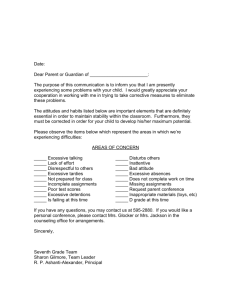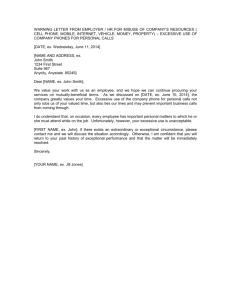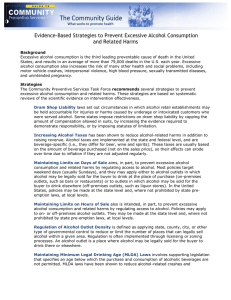Prevent Excess Alcohol Use
advertisement

The Guide to Community Preventive Services: Interventions to Prevent Excessive Alcohol Use Recommendations and findings regarding four interventions to prevent excessive alcohol use are provided in this fact sheet. They come from the Guide to Community Preventive Services (Community Guide) developed by the Task Force on Community Preventive Services (Task Force). With oversight from the Task Force, a team of experts led or supported by Community Guide scientists conducted a systematic review to evaluate scientific evidence and provide recommendations to policy makers on these interventions. BACKGROUND INFORMATION • Excessive alcohol consumption in the United States is responsible for approximately 75,000 deaths per year, making it the third leading cause of preventable death. 1 • Although drinking by persons under the age of 21 is against the law, people aged 12 to 20 years drink nearly 20% of all alcohol consumed in the United States. Over 90% of this alcohol is consumed in the form of binge drinking. 2 • In 2004, there were more than 142,000 emergency rooms visits by youth 12 to 20 years for injuries and other conditions linked to alcohol. 3 SUMMARY OF TASK FORCE RECOMMENDATIONS AND FINDINGS Recommended Interventions Based on Strong Evidence* Intervention Increasing alcohol taxes Number of Studies that Qualified for Review Selected Results Community Guide Resources 73 For every 10% increase in alcohol prices, alcohol consumption decreases by about 7% www.thecommunityguide.org/alcoh ol/increasingtaxes.html Similar relationships were found between increased alcohol prices or taxes and reductions in several harmful consequences of alcohol consumption, such as alcoholimpaired driving, alcohol-related crashes, other intentional and unintentional injuries, and liver cirrhosis Recommended Interventions Based on Sufficient Evidence* Association of State and Territorial Health Officials 2231 Crystal Drive І Suite 450 І Arlington І Virginia 22202 202-371-9090 І www.astho.org March 2010 The Guide to Community Preventive Services: Interventions to Prevent Excessive Alcohol Use Intervention Regulation of alcohol outlet density Number of Studies that Qualified for Review Selected Results Community Guide Resources 30 Overall, alcoholic beverage outlet density and policy changes that affect alcohol outlet density were associated with excessive alcohol consumption and related harms www.thecommunityguide.org/alcoh ol/outletdensity.html Policies that increased outlet density resulted in increased alcohol consumption and -related harms (4 studies) Privatization of alcohol sales was associated with increases in excessive alcohol consumption of the privatized beverage and minimal effects on beverages not privatized (17 studies) Maintaining limits on days of sale Enhanced enforcement of laws prohibiting sales to minors 12 8 Alcoholic beverage bans can reduce excessive consumption and related harms (7 studies) Removing limits on days of sale increased alcohol consumption and motor vehicle-related harms Maintaining existing limits on days of sale is recommended as one strategy for the prevention of excessive alcohol consumption and related harms Effective in reducing retail sales of alcohol to minors Association of State and Territorial Health Officials 2231 Crystal Drive І Suite 450 І Arlington І Virginia 22202 202-371-9090 І www.astho.org www.thecommunityguide.org/alcoh ol/limitingsale.html www.thecommunityguide.org/alcoh ol/lawsprohibitingsales.html March 2010 The Guide to Community Preventive Services: Interventions to Prevent Excessive Alcohol Use *The categories of “strong” and “sufficient” evidence reflect the Task Force’s degree of confidence that an intervention has beneficial effects. They do not directly relate to the expected magnitude of benefits. The categorization is based on several factors, such as: study design, number of studies, and consistency of the effect across studies. Online Resources • The Guide to Community Preventive Services: www.thecommunityguide.org • CDC, Alcohol and Public Health: www.cdc.gov/alcohol/index.htm • National Institute on Alcohol Abuse and Alcoholism: www.niaaa.nih.gov • Stop Underage Drinking, A Portal of Federal Resources: www.stopalcoholabuse.gov • SAMHSA Alcohol and Drug Information Resource: http://ncadi.samhsa.gov This fact sheet has been made possible by a cooperative agreement with CDC’s National Center for Health Marketing (Award No. U36/CCU325065-02). ASTHO is grateful for this support. 1 U.S. Dept. of Health and Human Services, Progress Review Healthy People 2010 http://www.healthypeople.gov/data/2010prog/focus26/ 2 CDC Community Guide Website http://www.thecommunityguide.org/alcohol/index.html 3 Ibid Association of State and Territorial Health Officials 2231 Crystal Drive І Suite 450 І Arlington І Virginia 22202 202-371-9090 І www.astho.org March 2010


